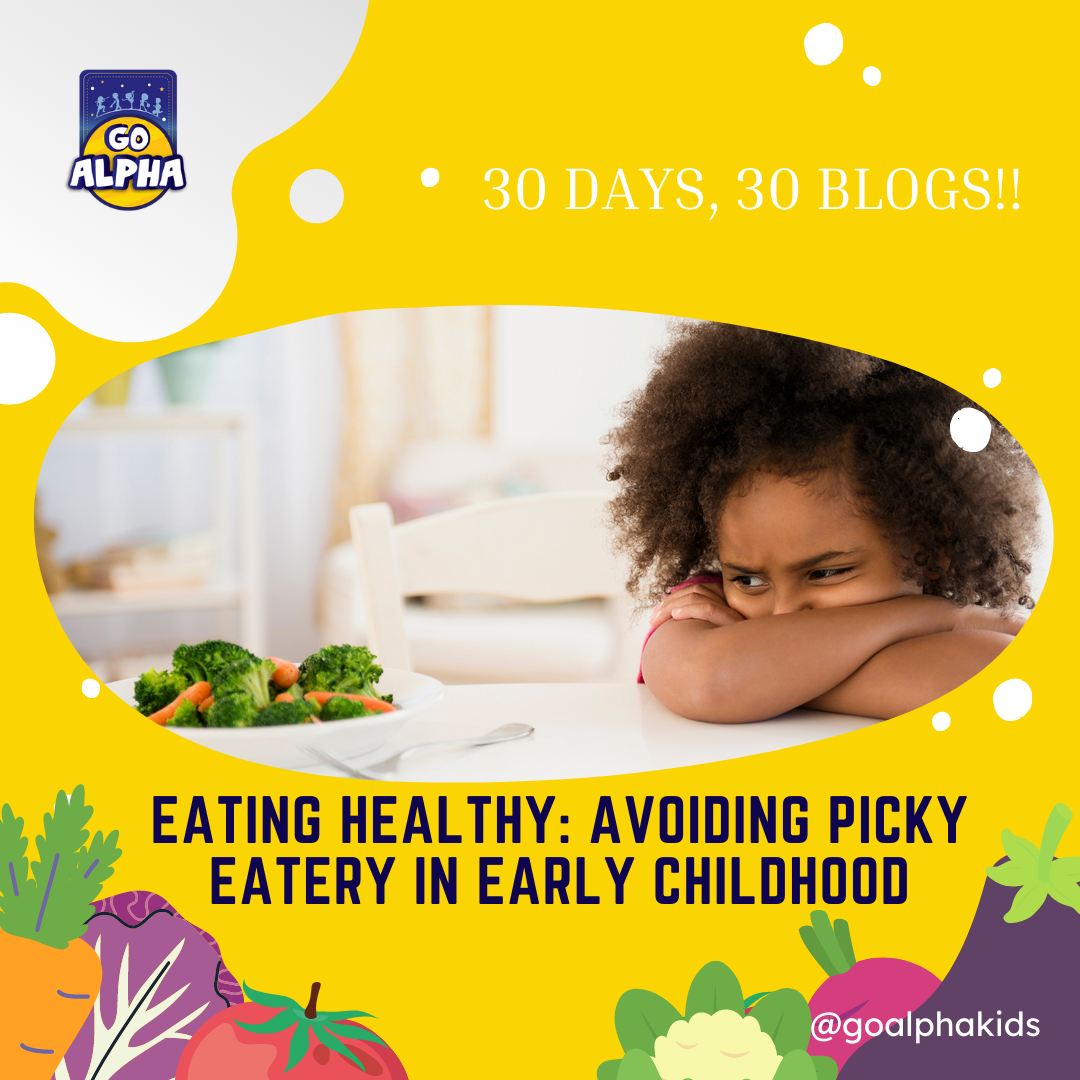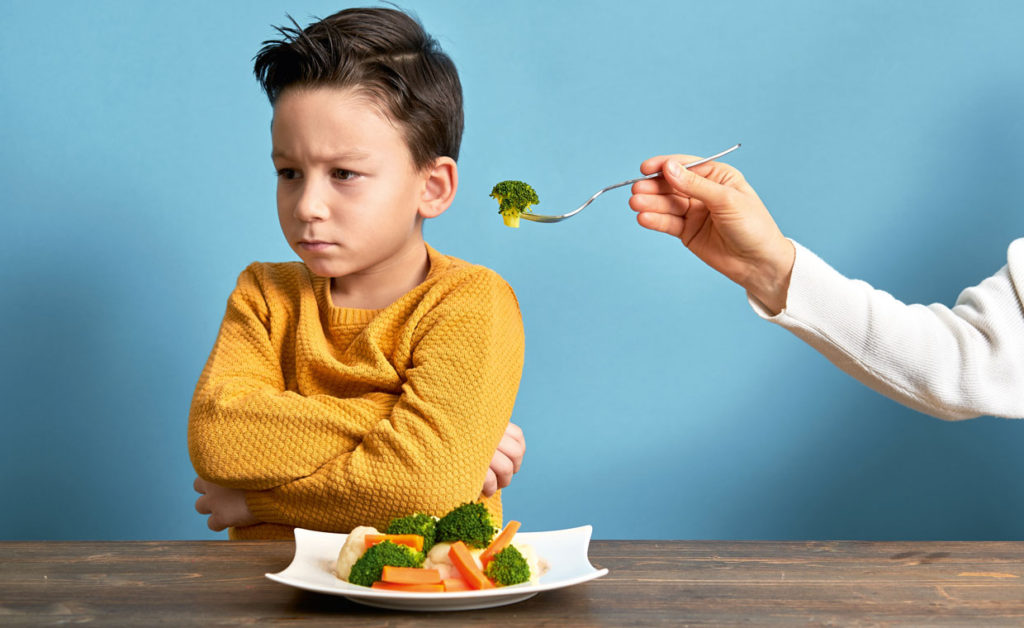

Eating Healthy: Avoiding Picky Eatery in Early Childhood
Times are changing, and so are eating habits. With the world pressing forward towards advancement, development, and modifications, the markets are filled with new varieties every day. Almost every other person has a particular dish’s name on his tongue that the listener might even have never tasted; this provides an insight into how diverse our cuisine has gotten over the past decades. When there are many options to choose from, individuals get confused on what to pick or ultimately narrow down their choices to select a few super yummy dishes.
This habit of narrowing down the choice list and not eating, mostly, nothing out of that list, is picky eating. This habit of eating picky is a sore topic in many households. Parents usually grow concerned about it and try all sorts of solutions, either learned online or verbally, to cross swords. But it’s normal in young kids to be fussy or picky in eating, obviously if not them then who would do that! Trying to discourage picky eating by applying strict dietary regimes often backfires. Picky eating or eating habits, in general, cannot be corrected instantly but taking baby steps with the kids, allowing them to observe and learn can help.
But before getting into what actually should be done and what the baby steps are, one should know what’s healthy for our young & dynamic superheroes.


The standard five food group classification for kids:
Grains: cereals, bread, oatmeal, rice, etc.
Protein-rich: pulses, chicken, meat, eggs, etc.
Dairy: cheese, milk, yogurt, etc.
Fruits
Vegetables
______________________________________________________________________________
“It is advisable to provide the kids with at least three protein-rich food products as a part of their meals throughout the day; here it’s the duty of the parents to constitute the eatables in such a manner that it delivers the same.”
______________________________________________________________________________
Micronutrients: Essential components
Certain nutrients called Micronutrients though required in trace amounts yet are pivotal in aiding children’s growth and development. They comprise of:
Calcium: Milk, cheese, paneer, etc.
At a growing stage, where every part of the body grows, bones need sufficient nutrients to be strong and healthy.
Iron: Green leafy vegetables, etc.
It forms a crucial part of hemoglobin in the blood required for proper circulation of oxygen from lungs to tissues.
Vitamin A: Sweet potatoes, carrots, broccoli, etc.
Essential components to have a clear, distinct vision!
Vitamin B: Meat, fish, dark green vegetables, etc.
It also helps in strengthening bones, just as calcium does!
Vitamin D: Sun
Essential for energy, Kids should be allowed to play in the sun during morning hours to have a fit, healthy and energetic body.
Taking Baby Steps: Dealing with Fussy Eaters
Leading by self-example is the key:
Parents themselves should act as role models. They should showcase their love and delight towards eating healthy food products, just as they want for their kids.
Presentation:
Outlook increases appetite and flavour; therefore, parents should pay special attention to the arrangement of eatables on the serving plates/bowls and the table altogether. Kids are drawn to delicately arranged savoury delights and would love to try something new out of the delicacies presented, even if they are picky.
Involve them in the cooking process:
Allowing the kids to have a glimpse of how something they are going to eat is cooked right from the raw phase will enable them to develop an interest in it. Involving them is a superb way to let them try new delicacies. Even if applying them could be as simple as turning off the stove knob. Who wouldn’t want to try a dish they made themselves!
Take opinions about specific food products:
Asking the kids about what they like about the food products and their dislike about the food products they avoid can be very beneficial. It will help in gaining insights as to what aversions does the child develops regarding certain food products. Cooking along the lines of the insights received can help cook the same dish differently, which might please your kid!
Change in Reward System:
Providing kids with sweets, chocolates, and candies after they finish a specific task can become super addictive. It could lead to the child longing for sweet delicacies at every other moment. To avoid this changing the reward system to something like giving extra hours to play or to do something the child likes would be sufficient.
Regular Mealtimes:
Setting up regular meal times wherein all the family members sit together and eat is relatively healthy. It promotes a sense of togetherness among kids and follows their elders in doing basic chores & habits.
The irresistible fast foods


Fast Food is the name given to eatables that are easily prepared and processed to be served in restaurants or taken away.
During their preparation, they are ripped off most of the nutrients, so they don’t have anything more to offer than flavour. Though they don’t have many nutrients yet they are bundled with large amounts of calories & sugar, which aren’t good for a growing body in huge quantities. Since it has a remarkable aroma & a delicious flavour, it is addictive if consumed at short intervals.
What could be done to avoid regular consumption of fast foods?
Cook the same food items at home with a twist of healthier ingredients!
There’s no need to ban fast food altogether from the house; instead, one day of an outing to appetize on those tempting delights works just fine.
Passing on knowledge is crucial; teaching your kids about healthy eating habits, nutrition & the importance of a healthy diet would benefit them in the long run.
To have a healthy lifestyle and good eating habits, only cooking and serving fit along with teaching. To have a healthy eating habit, one needs to check on the practices directly linked to it. Parents should ensure that their kids engage in physical activities that they enjoy, remain hydrated, restrict screen time an hour before bed, and have regular sleeping patterns. Finally, it’s about happiness, which matters; try to create an enjoyable atmosphere at home because kids get better at things they enjoy!
Written by Aditya
Related Blogs
FREE Sports class Demo at your preschool
Please fill the form to get more information and set up a FREE Go Alpha Demo at your preschool.




